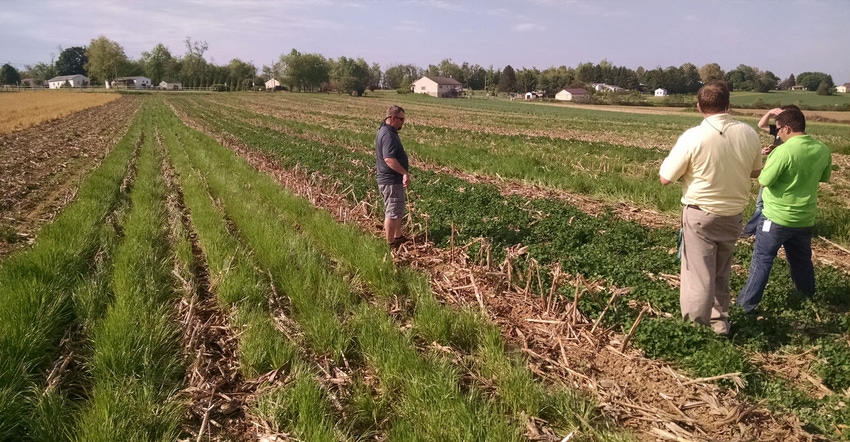August 30, 2019

Cover crop acreage has increased significantly over the past decades, and in some areas over 70% of farmland will be “green” going into this winter.
But there are other areas where you can drive 100 miles and be hard pressed to see any cover crops planted. There are various reasons for this, but if we can understand the barriers to cover crop adoption we might be able to pave the way for adoption in the future.
1. Lack of information. Some farmers are just now becoming open to the idea of using cover crops. Others who have just planted them for a year or two need more information and guidance to take it to the next level.
Now that cover crop information is readily available, there is no excuse for lack of knowledge. But the farmer must want to learn and provide a substantial amount of effort to effectively use cover crops on the farm.
2. Government programs. Unfortunately, government programs do not make it easy to add cover crops to existing standards for programs.
Crop insurance may be the most obvious. Certain dates are required for termination, and they aren’t always in line with best soil health practices.
Also, farmers who have invested in cover crops for several years are not being rewarded for managing their soils to be more resilient, thus less subject to insurance claims. Iowa and Illinois offer a $5-per-acre discount to farmers using cover crops for the first time, which is certainly a step in the right direction.
3. Peer pressure. This may seem trite, but this dynamic is powerful.
What will the neighbors think if I plant cover crops? How do you put up with the naysayers at the local coffee shop?
Becoming confident in how to use cover crops is the cure.
4. Rented land. This may be one of the most significant barriers. Why would a farmer pay $30 to $40 an acre on cover crops knowing there is a very real possibility that they may be outbidded by a neighbor the following year and not benefit from the investment they made?
You want to have a good relationship with the landlord. Some landlords have offered to share some or even all the cover crop expense. Some provide a prorated agreement where they will pay the farmer back if they do not farm the land after a certain amount of years.
5. Crop consultants. If your crop consultant is not supportive of cover crops and does not want to learn how to effectively use them, you might want to find someone who is experienced or, at the very least, is open to trying them on your farm.
6. Input suppliers. Some folks who sell fertilizer, crop care products and other farm inputs feel threatened by the claims of cover crop farmers who tout the reduced use of those products.
In some cases this is indeed true, but it takes quite a few years until tangible lower inputs are realized. Farmers need to fully understand what they want to accomplish with cover crops in order to be confident that lower costs of production are obtainable.
7. Bankers. It is likely that a banker will ask how it pays to spend money on an input such as cover crops when it does not show up anywhere on a balance sheet as income.
Farmers need to be prepared to explain how cover crops work and how they see them as an investment in their farming operation.
The Coach’s Closer
Mindset matters. How you think about something will dramatically affect your success. Treat your cover crops like your cash crops and you will increase their success.
Groff is a cover crop pioneer and innovator who farms in the Chesapeake Bay Watershed. Check out his website, covercropcoaching.com.
About the Author(s)
You May Also Like




